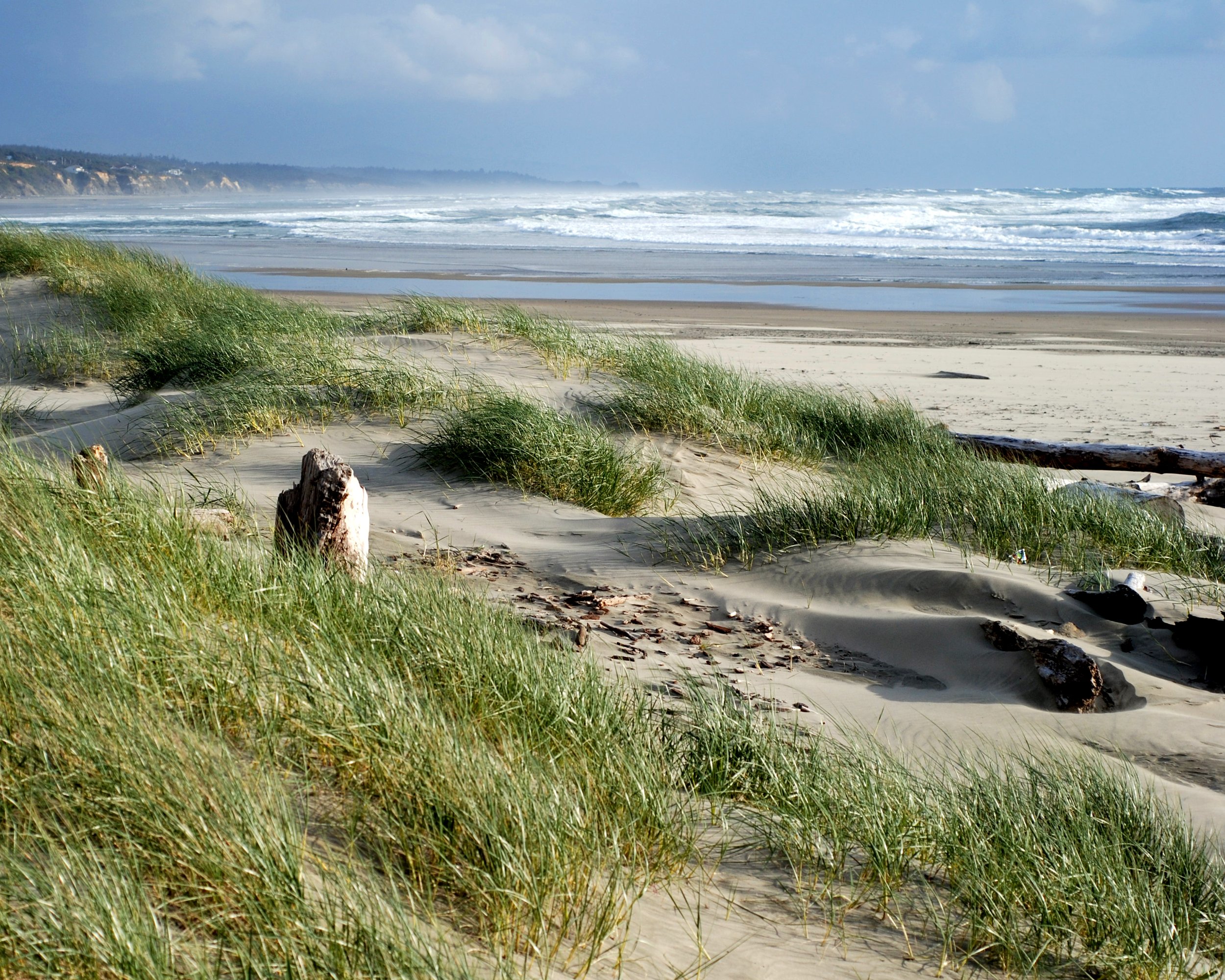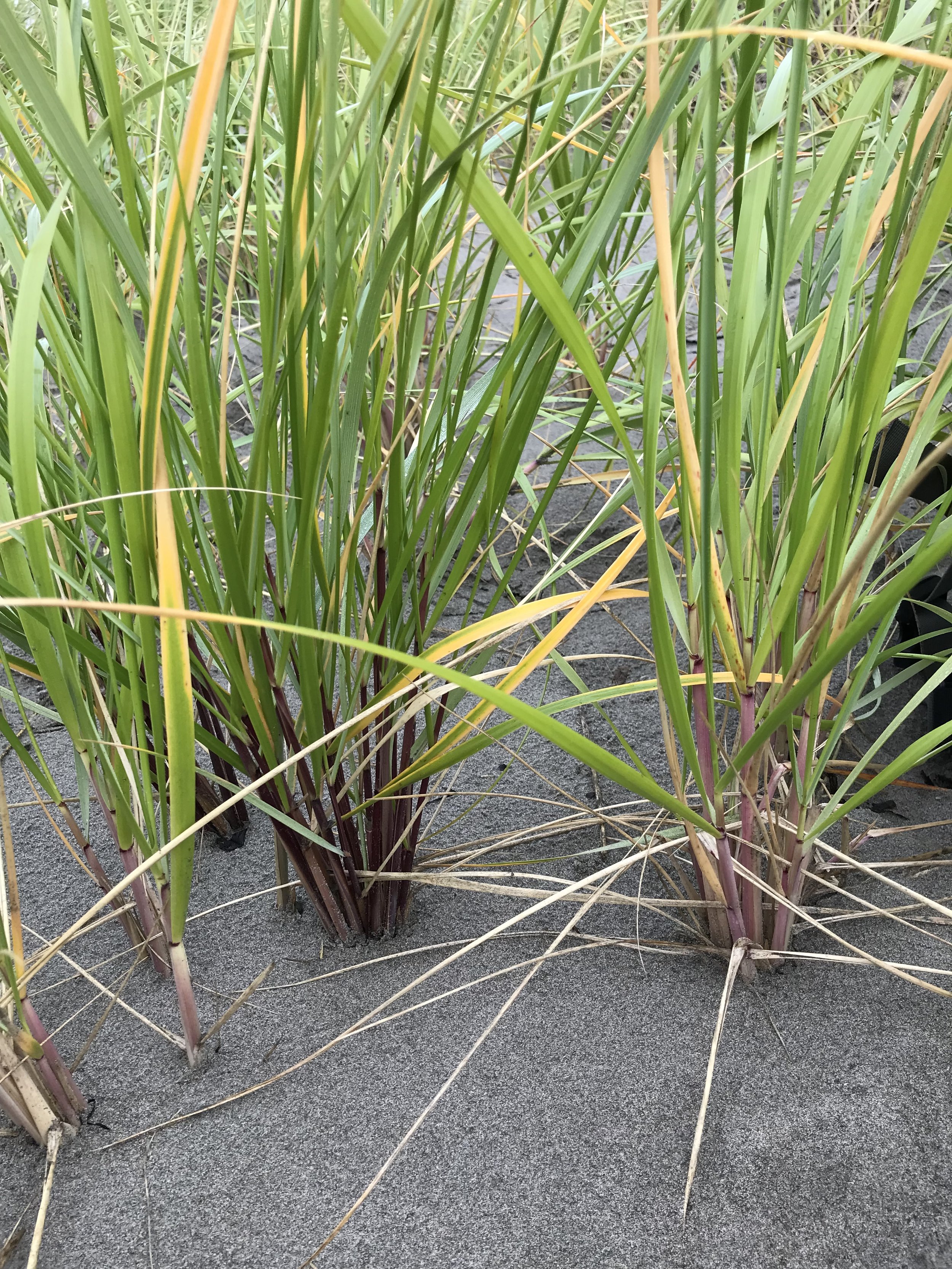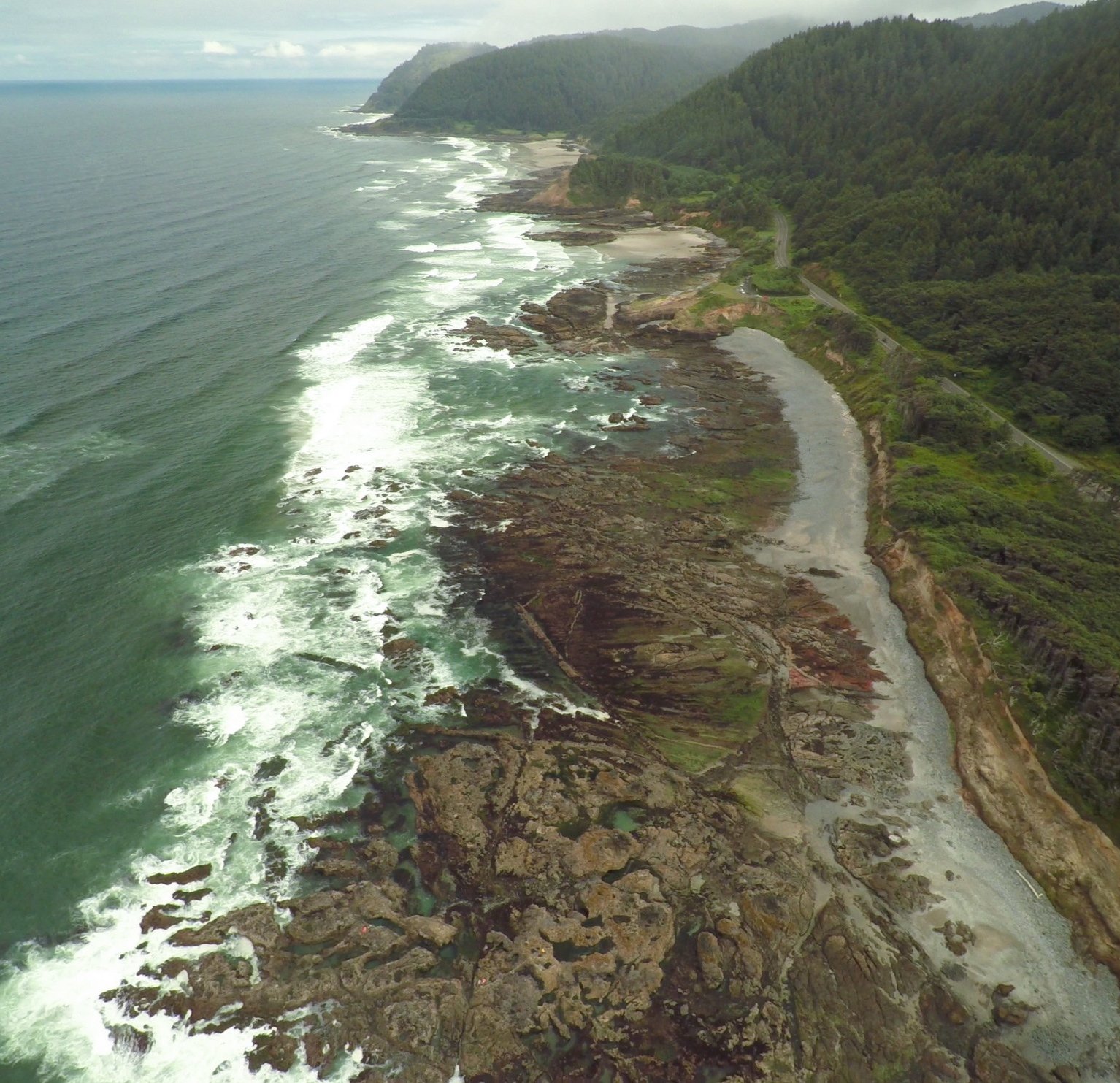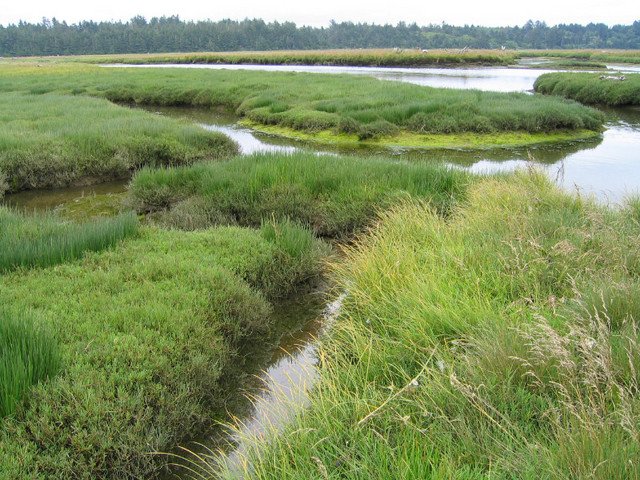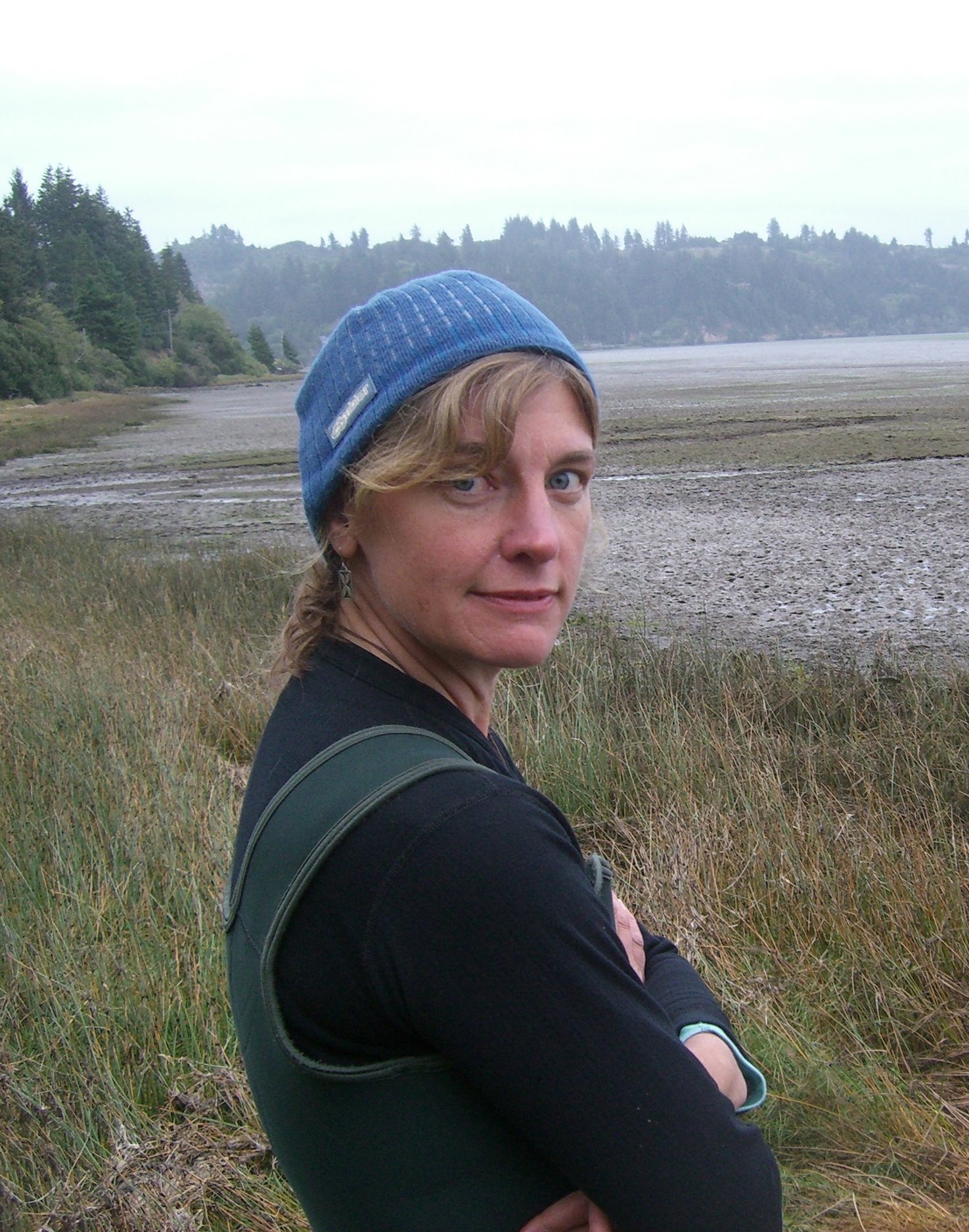Publications
Books
9. Bowman, W.D. and S.D. Hacker. 2023. Ecology, 6th Edition, Oxford University Press. 593 pp. (Click here)
8. Hillis, D.M., H.C. Heller, S.D. Hacker, D.W. Hall, M. Laskowski, and D. Sadava. 2023. Life: The Science of Biology, 12th Edition, MacMillan Publishers. 1296 pp. (Click here)
7. Bowman, W.D. and S.D. Hacker. 2020. Ecology, 5th Edition, Oxford University Press. 594 pp.
6. Hillis, D.M., H.C. Heller, S.D. Hacker, D.W. Hall, M. Laskowski, and D. Sadava. 2020. Life: The Science of Biology, 12th Edition, MacMillan Publishers/Oxford University Press. 1296 pp.
5. Bowman, W.D., S.D. Hacker, M.L. Cain. 2017. Ecology, 4th Edition, Sinauer Associates. 594 pp.
4. Sadava, D., D.M. Hillis, H.C. Heller, S.D. Hacker. 2017. Life: The Science of Biology, 11th Edition, MacMillan Publishers/Sinauer Associates. 1286 pp.
3. Cain, M.L., W.D. Bowman, and S.D. Hacker. 2014. Ecology, 3rd Edition, Sinauer Associates. 667 pp.
2. Cain, M.L., W.D. Bowman, and S.D. Hacker. 2011. Ecology, 2nd Edition, Sinauer Associates. 648 pp.
1. Cain, M.L., W.D. Bowman, and S.D. Hacker. 2008. Ecology, 1st Edition. Sinauer Associates. 648 pp.
Book Reviews
1. Hacker, S.D. 2014. Planning for coastal wetland change: fortress marsh or ecomarsh? Ecology 95:3453–3454.
Journal Articles and Book Chapters
107. Moore, L.J., S.D. Hacker, J. Breithaupt, Sierd de Vries, T. Miller, P. Ruggiero, and J.C. Zinnert. 2025. Ecomorphodynamics of coastal foredune evolution. Nature Reviews Earth & Environment. 6:417–432. https://doi.org/10.1038/s43017-025-00672-z
106. Biel, R.G., S.D. Hacker, S. Gerrity, E.W. Seabloom, and P. Ruggiero. 2025. Interactive effects of invasiveness and community invasibility of dune grass species on coastal dunes of the US Pacific Northwest. Biological Invasions. https://doi.org/10.1007/s10530-025-03564-x
105. Jay, K., S.D. Hacker, C.J. Hagen, J. Stepanek, L.J. Moore, P. Ruggiero. 2025. Quantifying the relative importance of sand deposition and dune grasses to carbon storage in U.S. Central Atlantic Coast dunes. Estuaries and Coasts. 48:60. https://doi.org/10.1007/s12237-025-01484-6
104. Laporte-Fauret, Q., M. Wengrove, P. Ruggiero, S. D. Hacker, N. Cohn, P. L. Zarnetske, and C. D. Piercy. 2024. A new approach to account for species-specific sand capture by plants in an aeolian sediment transport and coastal dune building model. Journal of Geophysical Research Earth Surface. https://doi.org/10.1029/2024JF007867
103. Meunier, Z., S. D. Hacker, and B. A. Menge. 2024. Regime shifts in rocky intertidal communities associated with a marine heatwave and disease outbreak. Nature Ecology and Evolution. 8:1285-1297. https://doi.org/10.1038/s41559-024-02425-5
102. Askerooth, R., R.S. Mostow, P. Ruggiero, F. Barreto, and S.D. Hacker. 2024. A novel hybrid beachgrass is invading U.S. Pacific Northwest dunes with potential ecosystem consequences. Ecosphere 15:e4830. https://doi.org/10.1002/ecs2.4830
101. Mostow, R. S., F. S. Barreto, and S.D. Hacker. 2024. A hybrid beachgrass (Ammophila arenaria × A. breviligulata) is more productive and outcompetes its non-native parent species. Oecologia. https://doi.org/10.1007/s00442-024-05548-5
100. Barbier E. B., S.D. Hacker, E. W. Koch, A.D. Stier, and B. R. Silliman. 2024. Estuarine and coastal ecosystems and their services. Pages 14-34 in Baird, D. and M. Elliott, editors. Treatise on Estuarine and Coastal Science, Second Edition, Volume 7, Elsevier, Oxford, UK. http://dx.doi.org/10.1016/B978-0-323-90798-9.00104-9
99. Gutierrez J.L., C.G. Jones, J.E. Byers, K.K. Arkema, K. Berkenbusch, J.A. Committo, C.M. Duarte, L.G. Gillis, S.D. Hacker, I.E. Hendriks, P.J. Hogarth, J.G. Lambrinos, M.G. Palomo, and C. Wild. 2024. Physical ecosystem engineers and the functioning of estuaries and coasts. Pages 607-644 in Baird, D. and M. Elliott, editors. Treatise on Estuarine and Coastal Science, 2nd Edition, Volume 4. Elsevier, Oxford, UK. http://dx.doi.org/10.1016/B978-0-323-90798-9.00093-7
98. Magel, C. L., S. D. Hacker, F. Chan, and A.R. Helms. 2023. Eelgrass and macroalgae loss in an Oregon estuary: consequences for ocean acidification and hypoxia. Ocean-Land-Atmosphere Research. https://doi.org/10.34133/olar.0023
97. Petillon, J., E. McKinley, M. Alexander, J.B. Adams, C. Angelini, T. Balke, J.N. Griffin, T. Bouma, S.D. Hacker, Q. He, M.J.S. Hensel, C. Ibanez, P.I. Macreadie, S. Martino, E. Sharps, R. Ballinger, D. de Battisti, N. Beuamont, D. Burdon, P. Daleo, A. D’Alpaos, M. Duggan-Edwards, A. Garbutt, S. Jenkins, Cai J.T. Ladd, H. Lewis, G. Mariotti, O. McDermott, R. Mills, I. Moller, S. Nolte, J. Pages, B. Silliman, L. Zhang, and M.W. Skov. 2023. Top ten priorities for global saltmarsh restoration, conservation, and ecosystem service research. Science of the Total Environment. 898:165544. https://doi.org/10.1016/j.scitotenv.2023.165544
96. LaPorte-Fauret, Q., R. Askerooth, M. Wengrove, S. Hacker, P. Ruggiero, J. Dickey, R. Edgell, and I. Silvernail. 2023. Experimental test of the influence of native and non-native plant species on sand accretion on a U.S. Pacific Northwest dune. Coastal Sediments 2023: 627–641. https://doi.org/10.1142/9789811275135_0059
95. Hovenga, P. A., P. Ruggiero, M. Itzkin, K. R. Jay, L. Moore, and S. D. Hacker. 2022. Quantifying the relative influence of coastal foredune growth factors on the U.S. Mid-Atlantic Coast using field observations and the process-based numerical model Windsurf. Coastal Engineering https://doi.org/10.1016/j.coastaleng.2022.104272
94. Dickey, J., M. Wengrove, N. Cohn, P. Ruggiero, and S. Hacker 2022. Observations and modeling of shear stress reduction and sediment flux within sparse dune grass canopies on managed coastal dunes. Earth Surface Processes and Landforms.https://doi.org/10.1002/esp.5526
93. Jay, K., S.D. Hacker, P.A. Hovenga, L.J. Moore, and P. Ruggiero. 2022. Sand supply and dune grass species density affect foredune shape along the US Central Atlantic Coast. Ecosphere. https://doi.org/10.1002/ecs2.4256
92. Jay, K., S.D. Hacker, P.A. Hovenga, L.J. Moore, P. Ruggiero, M. Itzkin, R. Mostow, J. Wood, E. Mullins, I. Reeves, N. Cohn, C. Hagen, E. B. Goldstein, and C. L. Magel. 2022. Surveys of coastal foredune topography and vegetation abundance, U.S. North Carolina Outer Banks, 2016-2018. Ver. 1. Environmental Data Initiative. https://doi.org//10.6073/pasta/59770602ba34230815f55da5c61e5
91. Nguyen, T., D.M. Kling, S.J. Dundas, S.D. Hacker, D. K. Lew, P. Ruggiero, and K. Roy. 2022. Quality over quantity: non-market values of restoring coastal dunes in the US Pacific Northwest. Land Economics. https://doi.org/10.3368/le.040721-0036R
90. Itzkin, M., L. J. Moore, P. Ruggiero, P. A. Hovenga, and S. D. Hacker. 2022. Combining process-based and data-driven approaches to forecast beach and dune change. Environmental Modelling and Software https://doi.org/10.1016/j.envsoft.2022.105404
89. Magel, C. L., F. Chan, M. Hessing-Lewis, and S. D. Hacker. 2022. Differential responses of eelgrass and macroalgae in Pacific Northwest estuaries following an unprecedented NE Pacific Ocean marine heatwave. Frontiers in Marine Science. https://doi.org/10.3389/fmars.2022.838967
88. Gutierrez, J. L., S. D. Hacker, M. A. Coombes, C. Wild, G. H. Pereira-Filho, and M. G. Palomo. 2022. Chapter 10: Marine Hard Substrate Communities. Pages 232-273 in Pan, J., P. Pratolongo, editors. Marine Biology: A Functional Approach to the Oceans and their Organisms. Science Publishers, CRC Press, Boca Raton, FL. https://doi.org/10.1201/9780429399244
87. Biel, R. and S.D. Hacker. 2021. Warming alters the interaction of two invasive beachgrasses with implications for range shifts and coastal dune functions. Oecologia https://doi.org/10.1007/s00442-021-05050-2
86. Hovenga, P., P. Ruggiero, E. B. Goldstein, S. D. Hacker, and L. J. Moore. 2021. The relative role of constructive and destructive processes in dune evolution on Cape Lookout National Seashore, North Carolina, USA. Earth Surface Processes and Landforms 2021:1–17. https://doi.org/10.1002/esp.5210
85. Itzkin, M., L. J. Moore, P. Ruggiero, S. D. Hacker, and R. Biel. 2021. The influence of dune aspect ratio and storm characteristics on dune erosion. Earth Surface Dynamics 9: 1223–1237 https://doi.org/10.5194/esurf-9-1223-2021
84. Mostow, R. S., F. Barreto, R. Biel, E. Meyer, and S. D. Hacker. 2021. Discovery of a dune-building hybrid beachgrass (Ammophila arenaria × Ammophila breviligulata) on the U.S. Pacific Northwest. Ecosphere 12(4):e03501. https://doi.org/10.1002/ecs2.3501
83. Menge, B.A., S. Close, S.D. Hacker, K. Nielsen, F. Chan. 2020. Biogeography of macrophyte productivity: effects of oceanic and climate regimes across spatiotemporal scales. Limnology and Oceanography https://doi.org/10.1002/lno.11635
82. Close, S., S.D. Hacker, B.A. Menge, F. Chan, K.J. Nielsen. 2020. Elemental composition of rocky intertidal macrophytes: variation with spatial scale, ocean upwelling, and climate cycles of the California Current System. Ecosystems.https://doi.org/10.1007/s10021-020-00484-w
81. Emery, S. M., L. L. Reid, and S.D. Hacker. 2020. Soil nematodes differ in association with native and non-native dune-building grass species. Applied Soil Ecology. https://doi.org/10.1016/j.apsoil.2019.06.009
80. Itzkin, M., L. J. Moore, P. Ruggiero, and S. D. Hacker. 2020. The effect of sand fencing on the morphology of natural dune systems. Geomorphology 352:106995. https://doi.org/10.1016/j.geomorph.2019.106995
79. Hacker, S. D. 2019. Marshes: Salt and Brackish. Handbook of Natural Resources, Second Edition, Taylor & Francis/CRC Press, Boca Raton, FL USA. https://www.taylorfrancis.com/chapters/edit/10.1201/9780429445507-4/marshes-salt-brackish-sally-hacker
78. Bortolus, A., P. Adam, J. Adams, M. Ainouche, D. Ayres, M. Bertness, T. Bouma, J. Bruno, I. Caçador, J. Carlton, J. Castillo, C. Costa, A. Davy, L. Deegan, B. Duarte, E. Figueroa, J. Gerwein, A. Gray, E. Grosholz, S.D. Hacker, A. Hughes, E. Mateos-Naranjo, I. Mendelssohn, J. Morris, A. Muñoz-Rodríguez, F. Nieva, L. Levin, B. Li, W. Liu, S. Pennings, A. Pickart, S. Redondo-Gómez, D. Richardson, A. Salmon, E. Schwindt, B. Silliman, E. Sotka, C. Stace, M. Sytsma, O. S. Temmerman, R. E. Turner, I. Valiela, M. Weinstein, J. Weis. 2019. Supporting Spartina: Interdisciplinary perspective shows Spartina as a distinct solid genus. Ecology e02863 https://doi.org/10.1002/ecy.2863
77. Lewis, D.J., S.J. Dundas, D.M. Kling, D.K. Lew, and S.D. Hacker. 2019. The value of early and partial gains in threatened species management: Evidence from public preferences for Oregon Coast Coho Salmon recovery. PLOS One https://doi.org/10.1371/journal.pone.0220260
76. Biel R.G., S.D. Hacker, and P. Ruggiero. 2019. Elucidating coastal foredune ecomorphodynamics in the US Pacific Northwest via Bayesian networks. Journal of Geophysical Research: Earth Surface. https://doi.org/10.1029/2018JF004758
75. Hacker S.D., B.A. Menge, K.J. Nielsen, F. Chan, and T.C. Gouhier. 2019. Regional processes are stronger determinants of rocky intertidal community dynamics than local biotic interactions. Ecology 100: e02763 https://doi.org/10.1016/j.apsoil.2019.06.009
74. Hovenga, P.A., P. Ruggiero, N. Cohn, K. R. Jay, S. D. Hacker, M. Itzkin, and L. Moore. 2019. Drivers of dune evolution in Cape Lookout National Seashore, NC. Pages 1283–1296 in Wing, P., J. D. Rosati, and M. Vallee. Editors. Coastal Sediments 2019–Proceedings of the 9th International Conference, St. Petersburg, FL. https://doi.org/10.1142/9789811204487_0112
73. Ruggiero, P., N. Cohn, B. Hoonhout, E. Goldstein, S. de Vries, L. Moore, S. Hacker, and O. Duran-Vinent. 2019. Simulating dune evolution on managed coastlines: exploring management options with the Coastal Recovery from Storms Tool (CReST). Shore and Beach 87(2): 36–43. https://doi.org/10.34237/1008724
72. Hacker, S.D., K.R. Jay, E.B. Goldstein, P. Hovenga, M. Itzkin, L.J. Moore, R.S. Mostow, E.V. Mullins, I. Reeves, and P. Ruggiero. 2019. Species-specific functional morphology of four US Atlantic coast dune grasses: biogeographic implications for dune shape and coastal protection. Diversity. 11, 82, https://doi.org/10.3390/d11050082
71. Hayduk, J., S.D. Hacker, J.S. Henderson, and F. Tomas Nash. 2019. Evidence for regional scale controls on eelgrass (Zostera marina) and mesograzer community structure in upwelling-influenced estuaries. Limnology and Oceanography 64:1120–1134.
70. Barner, A.K., F. Chan, A. Hettinger, S.D. Hacker, B. Menge, K. Marshall. 2018. Generality in multispecies responses to ocean acidification revealed through multiple hypothesis testing. Global Change Biology. 2018: 1-14. DOI: 10.111/gcb.14372.
69. Goldstein, E.B., E.V. Mullins, L.J. Moore, R.G. Biel, J.K. Brown, S.D. Hacker, K.R. Jay, R.S. Mostow, P. Ruggiero, and J.C. Zinnert. 2018. Literature-based latitudinal distribution and possible range shifts of two US east coast dune grass species (Uniola paniculata and Ammophila breviligulata). PeerJ 6:e4932; DOI 10.7717/peerj.4932
68. Reimer, J., S.D. Hacker, B. A. Menge, and P. Ruggiero. 2018. Macrophyte wrack on sandy beaches of the US Pacific Northwest is linked to proximity of source habitat, ocean upwelling, and beach morphology. Marine Ecology Progress Series 594:263-269.
67. Barner, A. K., K.E. Coblentz, S.D. Hacker, and B.A. Menge. 2018. Fundamental contradictions among observational and experimental estimates of non-trophic species interactions. Ecology 99:557-566 doi: 10.1002/ecy.2133
66. Ruggiero, P., S.D. Hacker, E. Seabloom, P. Zarnetske. 2018. The role of vegetation in determining dune morphology, exposure to sea level rise, and storm-induced coastal hazards: A U.S. Pacific Northwest perspective. Chapter 11. Pages 337-362 in Moore, L., B. Murray. Barrier Dynamics and the Impacts of Climate Change on Barrier Evolution, Springer.
65. Chan F. J.A., Barth, C.A. Blanchette, R.H. Byrne, F. Chavez, O. Cheriton, R. A. Feely, G. Friederich, B. Gaylord, T. Gouhier, S.D. Hacker, T. Hill, G. Hoffman, M.A. McManus, B.A. Menge, K.J. Nielsen, A. Russell, E. Sanford, J. Sevadjian, and L. Washburn. 2017. Persistent spatial structuring of coastal ocean acidification in the California Current System. Scientific Reports 7: DOI:10.1038/s41598-017-02777-y
64. Biel R.G., S.D. Hacker, P. Ruggiero, N. Cohn, and E.W. Seabloom. 2017. Coastal protection and conservation along sandy beaches and dunes: context-dependent tradeoffs in ecosystem services. Ecosphere 8: e01791. 10.1002/ecs2.1791
63. Barner, A. K., S. D. Hacker, B. A. Menge, and K. J. Nielsen. 2016. The complex net effect of reciprocal interactions and recruitment facilitation maintains an intertidal kelp community. Journal of Ecology 104:33-43
62. Henderson, J., S.D. Hacker. 2015. Buried alive: an invasive seagrass (Zostera japonica) changes its reproductive allocation in response to sediment disturbance. Marine Ecology Progress Series 532:123–136
61. Zarnetske, P., P. Ruggiero, S.D. Hacker, E. Seabloom. 2015. Coastal foredune evolution: the relative influence of vegetation and sand supply in the US Pacific Northwest. Journal of the Royal Society Interface 12: http://dx.doi.org/10.1098/rsif.2015.0017
60. Hessing-Lewis, M., S.D. Hacker, B.A. Menge, S. McConville, J. Henderson. 2015. Are large macroalgal blooms necessarily bad? Nutrient impacts on seagrass in upwelling-influenced estuaries. Ecological Applications 25:1330-1347
59. David, A.S., P.L. Zarnetske, S.D. Hacker, P. Ruggiero, R.G. Biel, and E.W. Seabloom. 2015. Invasive congeners differ in successional impacts across space and time. PLoS ONE 10(2): e0117283.doi:10.1371/journal.pone.0117283
58. Menge, B.A., T.C. Gouhier, S.D. Hacker, F. Chan and K. Nielsen. 2015. Are metaecosystems organized hierarchically? A model and test in rocky intertidal habitats. Ecological Monographs 85:213–233.
57. Bakker, J.P., K.J. Nielsen, J. Alberti, F. Chan, S. D. Hacker, O.O. Iribarne, D.P.J. Kuijper, B.A. Menge, M. Schrama and B. R. Silliman. 2015. Bottom-Up and Top-Down Interactions in Coastal Interface Systems. Chapter 7. Pages 157-200 in Hanley, T.C. and K.J. La Pierre. Bottom-Up and Top-Down Interactions across Aquatic and Terrestrial Systems, Cambridge University Press, Cambridge.
56. Hacker S.D. 2014. Salt and brackish marshes. In: Encyclopedia of Natural Resources. Taylor and Francis Group, LLC: New York. Doi: 10.1081/E-ENRL-120047521.
55. Hessing-Lewis, M.L., S.D. Hacker. 2013. Latitudinal trends in macroalgal blooms and seagrass production in northeast Pacific upwelling-influenced estuaries. Limnology and Oceanography 58: 1103–1112.
54. Keammerer, H., S.D. Hacker. 2013. Negative and neutral interactions dominate in early life stages and across stress gradients in an Oregon estuary. Plant Ecology 214:303-315.
53. Seabloom, E.W., P. Ruggiero, S.D. Hacker, J. Mull, P.L. Zarnetske. 2013. Invasive grasses, climate change, and exposure to storm-wave overtopping in coastal dune ecosystems. Global Change Biology 19:824-832.
52. Zarnetske, P., T. Gouhier, S.D. Hacker, E. Seabloom, V. Bokil. 2013. Indirect effects and facilitation among native and non-native species promote invasion success along an environmental stress gradient. Journal of Ecology doi: 10.1111/1365-2745.12093.
51. Ruggiero, P., G. M. Kaminksy, S.D. Hacker. 2013. Morphodynamics of prograding beaches. Coastal Dynamics 2013:1375–1384
50. Wagner, E., B.R. Dumbauld, S.D. Hacker, A.C. Trimble, L.M. Wisehart, J.L. Ruesink. 2012. Density-dependent effects of an introduced oyster, Crassostrea gigas, on a native intertidal seagrass, Zostera marina. Marine Ecology Progress Series 468:149-160.
49. Ruesink J.L., J. Fitzpatrick, B.R., Dumbauld, S.D. Hacker, A.C. Trimble, E.L. Wagner, L.M. Wisehart. 2012. Life history and morphological shifts in an intertidal seagrass following multiple disturbances. Journal of Experimental Marine Biology and Ecology 424-425:25-31
48. Zarnetske, P., S.D. Hacker, E.W. Seabloom, P. Ruggiero, J.R. Killian, T.B. Maddux, D. Cox. 2012. Biophysical feedback mediates effects of invasive grasses on coastal dune shape. Ecology 93:1439-1450.
47. Aswani, S., P. Christie, N.A. Muthiga, R. Mahon, J.H. Primavera, L.A. Cramer, E.B. Barbier, E.F. Granek, C. Kennedy, E. Wolanski, and S.D Hacker. 2012. The way forward with ecosystem-based management in tropical contexts: Reconciling with existing management systems. Marine Policy 36:1-10.
46. Hacker S.D., P. Zarnetske, E. Seabloom, P. Ruggiero, J. Mull, S. Gerrity, and C. Jones. 2012. Subtle differences in two non-native congeneric beach grasses significantly affect their colonization, spread, and impact. Oikos 121:138–148.
45. Gutierrez J.L., C.G. Jones, J.E. Byers, K.K. Arkema, K. Berkenbusch, J.A. Committo, C.M. Duarte, S.D. Hacker, P.J. Hogarth, J.G. Lambrinos, M.G. Palomo, C. Wild, and I.E. Hendriks. 2011. Physical ecosystem engineers and the functioning of estuaries and coasts. Pages 53-81 in C.H.R. Heip, C.J.M., Philippart, and J.J. Middelburg, editors. Volume 7: Functioning of Estuaries and Coastal Ecosystems, in the Treatise on Estuarine and Coastal Science (E. Wolanski, and D. McLusky, series editors), Elsevier. DOI: 10.1016/B978-0-12-374711-2.00705-1.
44. Barbier E., S.D. Hacker, E. Koch, B. Silliman, and A.D. Stier. 2011. Estuarine and coastal ecosystems and their services. Pages 109-127 in M. van den Belt and R. Costanza, editors. Volume 12: Ecological Economics of Estuaries and Coasts, in the Treatise on Estuarine and Coastal Science (E. Wolanski, and D. McLusky, series editors), Elsevier.
43. Ruggiero, P., J. Mull, P. L. Zarnetske, S. D. Hacker, and E. W. Seabloom. 2011. Interannual to decadal foredune evolution. Pages 698–711 in Wang, P., J. D. Rosati, T. M. Roberts, editors. Coastal Sediments 2011, Proceedings of Coastal Sediments, Miami, FL.
42. Gouhier, T. C., B. A. Menge, S.D. Hacker. 2011. Recruitment facilitation can promote coexistence and buffer population growth in metacommunities. Ecology Letters 14: 1201–1210.
41. Menge, B.A., S.D. Hacker, T. Freidenburg, J. Lubchenco, R. Craig, G. Rilov, M. Noble, E. Richmond. 2011. Potential impact of climate-related changes is buffered by differential responses to recruitment and interactions. Ecological Monographs 81:493–509.
40. Moulton O.M. and S.D. Hacker. 2011. Congeneric variation and environmental gradients influence community structure: Surfgrasses and macroinvertebrates along the Oregon coast. Marine Ecology Progress Series 433:53–63.
39. Hessing-Lewis M., S.D. Hacker, B.A. Menge, S. Rumrill. 2011. Context dependent eelgrass-macroalgae interactions along an estuarine gradient in the Pacific Northwest, USA. Estuaries and Coasts 34:1169–1181.
38. Guarderas A.P., S.D. Hacker, and J. Lubchenco. 2011. Analysis of the ecological effects of marine reserves in Latin America and the Caribbean. Marine Ecology Progress Series 429:219–225.
37. Barbier E., S.D. Hacker, C. Kennedy, E. Koch, B. Silliman, and A.D. Stier. 2011. The value of estuarine and coastal ecosystem services. Ecological Monographs 81:169–193.
36. Zarnetske P.L., E.W. Seabloom, and S.D. Hacker. 2010. Non-target effects of invasive species management: Beach grass, birds, and bulldozers in coastal dunes. Ecosphere 1: 13.
35. Hacker S.D., and M.N. Dethier. 2010. Where do we go from here? Alternative control and restoration trajectories for a marine grass (Spartina anglica) invader in different habitat types. Pages 211-216 in Ayres, D. R., D. W. Kerr, S.D. Ericson, and P. R. Olofson (editors). Proceedings of the 3rd International Conference on Invasive Spartina, San Francisco, CA, USA. San Francisco Estuary Invasive Spartina Project of the California State Coastal Commission, Oakland, CA.
34. Foley M.M., B.S. Halpern, F. Micheli, M.H. Armsby, M.R. Caldwell, E. Prahler, D. Sivas, C.M. Crain, N. Rohr, M.W. Beck, M.H. Carr, L.B. Crowder, J.E. Duffy, S.D. Hacker, K. McLeod, C.H. Peterson, H.M. Regan, P.A. Sandifer, and R.S. Steneck. 2010. Guiding ecological principles for marine spatial planning. Marine Policy 34: 955-966. DOI: 10.1016/j.marpol.2010.02.001.
33. Ruesink J.L., J-S. Hong, L. Wisehart, S.D. Hacker, B.R. Dumbauld, A.C. Trimble, and M. Hessing-Lewis. 2010. Congener comparison of native (Zostera marina) and introduced (Z. japonica) eelgrass at multiple scales within a Pacific Northwest estuary. Biological Invasions 12: 1773–1789.
32. Granek E., Polasky, S., Barbier, C. Kappel, D. Stoms, D.J. Reed, J. Primavera, E.W. Koch, C. Kennedy, L.A. Cramer, S.D. Hacker, G.M.E. Perillo, S. Aswani, B. Silliman, E. Barbier, E. Wolanski, and D. Bael. 2010. Ecosystem services as a common language for coastal ecosystem-based management. Conservation Biology 24: 207-216. DOI: 10.1111/j.1523-1739.2009.01355.x.
31. Hacker S.D. 2009. Positive interspecific interactions. In: Encyclopedia of Life Sciences (ELS). John Wiley & Sons, Ltd: Chichester. DOI: 10.1002/9780470015902.a0021901.
30. Tallis H.M., J.L. Ruesink, B. Dumbauld, S.D. Hacker, and L.M. Wisehart. 2009. Oysters and aquaculture practices affect eelgrass density and productivity in a Pacific Northwest estuary. Journal of Shellfish Research 28: 251–
29. Koch E.W., E.B. Barbier, B. Silliman, G.M.E. Perillo, D.J. Reed, S.D. Hacker, E. Wolanski, J. Primavera, E. Granek, S. Polasky, S. Aswani, L.A. Cramer, D. Stoms, C. Kennedy, D. Bael, and C. Kappel. 2009. Nonlinearity in ecosystem services: temporal and spatial variability in coastal protection. Frontiers in Ecology and the Environment 7:29–37. DOI: 10.1890/080126.
28. Hacker S.D. and M.N. Dethier. 2009. Differing consequences of removing ecosystem–modifying invaders: significance of impact and community context to restoration potential. Pages 375–385 in: Marine Bioinvasions: Ecology, Conservation and Management Perspectives, Editors: Gil Rilov and Jeffrey Crooks, Springer-Verlag.
27. Barbier E.B., E.W. Koch, B. Silliman, S.D. Hacker, E. Wolanski, J. Primavera, E. Granek, S. Polasky, S. Aswani, L.A. Cramer, D. Stoms, C. Kennedy, D. Bael, C. Kappel, G.M.E. Perillo and D.J. Reed. 2008. Ecological quality changes preceding changes in quality of mangrove: Reply. Science. Response to N. Koedam and F. Dahdouh-Guebas’s E-letter. http://www.sciencemag.org/cgi/eletters/319/5861/321?ck=nck.
26. Guarderas A.P., S.D. Hacker, and J. Lubchenco. 2008. Current status of marine protected areas in Latin America and the Caribbean. Conservation Biology 22: 1630-1640. DOI: 10.1111/j.1523-1739.2008.01023.x.
25. Barbier E.B., E.W. Koch, B. Silliman, S.D. Hacker, E. Wolanski, J. Primavera, E. Granek, S. Polasky, S. Aswani, L.A. Cramer, D. Stoms, C. Kennedy, D. Bael, C. Kappel, G.M.E. Perillo and D.J. Reed. 2008. Vegetation’s role in coastal protection: Reply. Science 320: 176-177.
24. Barbier E.B., E.W. Koch, B. Silliman, S.D. Hacker, E. Wolanski, J. Primavera, E. Granek, S. Polasky, S. Aswani, L.A. Cramer, D. Stoms, C. Kennedy, D. Bael, C. Kappel, G.M.E. Perillo and D.J. Reed. 2008. Coastal ecosystem-based management with non-linear ecological functions and values. Science 319: 321-323.
23. Richardson N.F., J.L. Ruesink, S. Naaem, S.D. Hacker, H.M. Tallis, B.R. Dumbauld, and L.M. Wisehart. 2008. Bacterial abundance and aerobic microbial activity across natural and oyster aquaculture conditions in a northeastern Pacific estuary. Hydrobiologia 596:269-278.
22. Wisehart L.M., B.R. Dumbauld, J.L. Ruesink, and S.D. Hacker. 2007. Importance of eelgrass life history stages in response to oyster aquaculture disturbance. Marine Ecology Progress Series 344:71-80.
21. Hacker S.D. and M.N. Dethier. 2006. Community modification by a grass invader has differing impacts for marine habitats. Oikos 113: 279-286.
20. Dethier M.N. and S.D. Hacker. 2005. Physical factors vs. biotic resistance in controlling the invasion of an estuarine marsh grass. Ecological Applications. 15:1273-1283.
19. Dethier M.N. and S.D. Hacker. 2004. Improving management practices for invasive cordgrass in the Pacific Northwest: A case study of Spartina anglica. Washington Sea Grant Program Publication, Seattle, WA. WSG-AS 04-05. 21pp. http://www.wsg.washington.edu/research/pdfs/spartinaang.pdf
18. Reeder T.G. and S.D. Hacker. 2004. Factors contributing to the removal of a marine grass invader (Spartina anglica) and subsequent potential for habitat restoration. Estuaries 27: 244-252.
17. Hacker S.D. and M.N. Dethier. 2003. Community dependent invasion and removal of English cordgrass, Spartina anglica, in Puget Sound, Washington. Botanical Electronic News. No. 312.
16. Hacker S.D. 2002. Positive Interactions. Pages 591-594 in N. Eldridge, editor. Encyclopedia of Biodiversity, ABC–CLIO Publishers, Santa Barbara, CA.
15. Hacker S.D. 2002. Coastal Wetlands. Pages 234-235 in N. Eldridge, editor. Encyclopedia of Biodiversity, ABC–CLIO Publishers, Santa Barbara, CA.
14. Hacker S.D., D. Heimer, C.E. Hellquist, T.G. Reeder, B. Reeves, T. Riordan, and M.N. Dethier. 2001. A marine plant (Spartina anglica) invades widely varying habitats: potential mechanisms of invasion and control. Biological Invasions 3: 211-217.
13. Hacker S.D. and M.D. Bertness. 1999. Experimental evidence for the factors maintaining plant species diversity in a New England salt marsh. Ecology 80: 2064–2073.
12. Wu M.–Y., S.D. Hacker, D. Ayres and D.R. Strong. 1999. Potential of Prokelisia spp. as biological control agents of English cordgrass, Spartina anglica. Biological Control 16: 267–273.
11. Levine J.M., S.D. Hacker, C.D.G. Harley and M.D. Bertness. 1998. Nitrogen effects on an interaction chain in a salt marsh community. Oecologia 117: 266–272.
10. Hacker S.D. and S.D. Gaines. 1997. Some implications of direct positive interactions for community species diversity. Ecology 78: 1990–2003.
9. Madin L., P. Kremer, S.D. Hacker. 1996. Distribution and vertical migration of salps (Tunicata, Thaliacea) near Bermuda. Journal of Plankton Research 18:747–755.
8. Hacker S.D. and M.D. Bertness. 1996. Trophic consequences of a positive plant interaction. The American Naturalist 148: 559–575.
7. Hacker S.D. and M.D. Bertness. 1995. Morphological and physiological consequences of a positive plant interaction. Ecology 76: 2165–2175.
6. Hacker S.D. and M.D. Bertness. 1995. A herbivore paradox: why salt marsh aphids live on poor quality plants. The American Naturalist 145: 192–210.
5. Bertness M.D. and S.D. Hacker. 1994. Physical stress and positive associations among marsh plants. The American Naturalist 144: 363–372.
4. Goyet C. and S.D. Hacker. 1992. Procedure for calibration of a coulometric system used for total inorganic carbon measurements of seawater. Marine Chemistry 38: 37–51.
3. Hacker S.D. and L.P. Madin. 1991. Why habitat architecture and color are important to shrimp living in pelagic Sargassum: use of camouflage and plant–part mimicry. Marine Ecology Progress Series 70: 143–155.
2. Steneck R.S., S.D. Hacker, and M.N. Dethier. 1991. Mechanisms of competitive dominance between crustose coralline algae: an herbivore-mediated competitive–reversal. Ecology 72: 938–950.
1. Hacker S.D. and R.S. Steneck. 1990. Habitat architecture and the abundance and body size–dependent habitat selection of a phytal amphipod. Ecology 71: 2269–2285.

